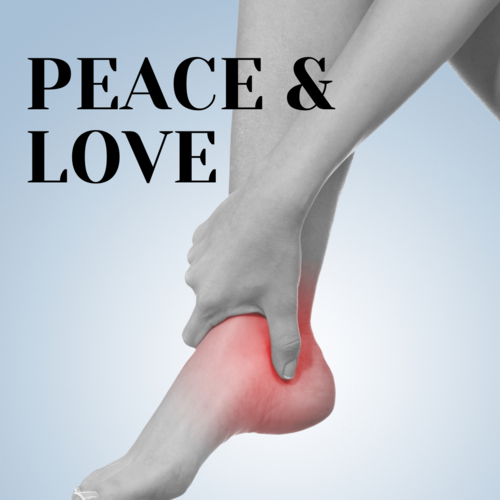PEACE, LOVE, & Soft Tissue Injuries

As an athletic trainer and physical therapist, as well as a former national team swimmer, Mauricio Elizondo understands injured athletes. At 18 years old, he suffered a shoulder injury and had his appendix removed (yes, both happened at the same time!) that forced him to withdraw from his swimming national championship... more
PEACE, LOVE, & Soft Tissue Injuries
The acronyms PEACE & LOVE are probably new to you but you may be familiar with ones like RICE, PRICE, and maybe even POLICE. These are all acronyms that have been used over the years to describe management of soft tissue injuries like an ankle sprain. RICE (Rest, Ice, Compression, and Elevation) and PRICE (Protection, Rest, Ice, Compression, and Elevation) were the two original treatment protocols after soft tissue injuries and focused mainly on modalities and limiting activity. The next model strived to limit the rest component and POLICE (Protection, Optimal Loading, Ice, Compression, and Elevation) was identified. This model replaced the ‘rest’ with ‘optimal loading’ and the idea with this is that using early loading can aid recovery. However, what is optimal loading varies from person to person and is also based on the injury and its severity (1).
As our research continues to progress there is one main flaw with the first three protocols that clinicians and researchers began to identify, and that is that they primarily address the acute (immediate) phase after injury, and they fail to address the subacute and chronic phases of injury as well as they tend to be more passive protocols. The more contemporary acronym of PEACE & LOVE tries to address all phases of injury as well as addressing patient understanding (2).
So let’s dive a little deeper into what these mean, starting with PEACE (Protection, Elevation, Avoid anti-inflammatories, Compression, and Education) which addresses the management immediately after injury, meaning just in the first few days. First, Protection means avoiding any particularly aggravating activities or motion in the first 1-3 days. Second, Elevation involves, just as it has before, elevating the injured area above the level of the heart to promote decrease in swelling. Third, Avoid anti-inflammatories including medications and many times ice as the body’s natural inflammatory response that is present to help heal after injuries will be impeded. Now, with that being said it does not mean that anti-inflammatories do not need to be avoided in all incidences but growing research supports this component and we could spend a lot more time discussing this particular piece. Fourth, Compression which can involve bandages to promote a decrease in swelling. Finally, Education which is mainly directed at health care professionals like your Physical Therapist educating you, as the patient, on the importance of an active approach for recovery, on the injury itself, on appropriate loading, and realistic expectations for recovery (2).
The second piece to this newer guide to managing injuries, LOVE (Load, Optimism, Vascularization, and Exercise), addresses the subacute and chronic phases after the first few days. First, Load is encouraging the active over passive approach to recovery and to gradually load the injured area as it tolerates without increased symptoms. Ideally, normal activities should be resumed as soon as tolerated. Second, Optimism addresses the mental side of injury and current research shows that an optimistic outlook on recovery can improve recovery rate. Third, Vascularization refers to initiating cardiovascular activity to promote blood flow to the injured area as increased blood flow will aid the healing process. Lastly, Exercise can help to improve mobility and strength. Exercise should be progressed based on pain (2).
So while this is a quick overview and history of management of soft tissue injuries, we hope that if you have a soft tissue injury that you think about PEACE & LOVE. We are always here to help and we will happily guide you through these steps and help you learn what is the appropriate treatment after your soft tissue injury. Please feel free to reach out to us with questions or to set up a FREE consultation at info@performancesportphysio.com or 727-826-7142.
All the best,
The Performance Sport Physio team
References
1. Bleakley CM, Glasgow P, MacAuley DC. Price needs updating, should we call the police? Br J Sports Med 2012; 46: 220-221.
2. Dubois B, Esculier J-F. Soft tissue injuries simply need peace and love. Br J Sports Med 2020; 54:2.








